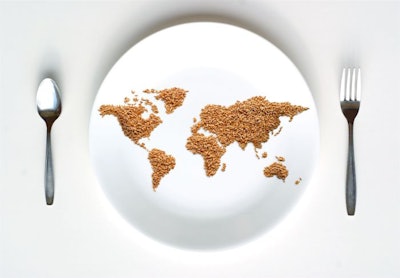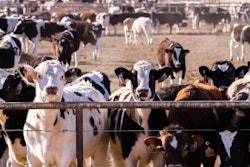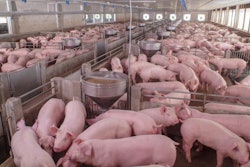
Jack Bobo says agriculture is the solution to a problem, not a problem to be solved
There is no silver bullet to the ability to feed a global population of more than 9 billion people by 2050. There is a “menu of solutions” across many sectors of the “food economy,” according to Jack Bobo, CEO of food consultancy firm Futurity, who spoke May 21 during Alltech’s ONE Virtual Experience.
When it comes to sustainability, the ideas of local sustainability vs. global sustainability are often very different from each other, Bobo said.
“When we think about local sustainability, that’s really how most consumers think about sustainability, because they’re thinking about farmers using less fertilizer and less insecticide and producing things in a way that doesn’t have runoff into the local environment,” he said. “They want to have less of an impact of agriculture on the land.”
But, he pointed out, methods such as organic agriculture result in 20-30% less food for a given amount of land.
“Imagine for a moment that the entire world were organic: What would that mean?” he asked. “Well, the main thing it would mean is that we just wouldn’t have any forest anymore, because we would need 20% to 30% more land in order to produce the food we have. And 40% of all the land on earth is already used for agriculture. So that would have a devastating impact.”
For this reason, the concept of global sustainability is the opposite of local sustainability.
“It’s about prioritizing intensive agriculture in one place in order to protect the environment somewhere else,” he said. “That could mean more intensive livestock production through contained animal feeding … where you see the environmental impact locally of that intensive agricultural production. But what you don’t see is that you don’t need to have more animals going out into in Brazil, where they have to cut down forests in order to make way for expanded livestock production. So, you don’t see the land protected; you only see the local impact. This comparison between local and global sustainability is part of the different story that we’re telling.”
But, Bobo said we need local and global sustainability; neither one is right or wrong.
“It’s really about choices and consequences,” he said. “But there are consequences to the choices we make.”
What’s on the menu?
Those choices – the “menu of solutions” – will be different across various regions or sectors, and they will all work together to create a better food production system to feed the world.
“Rather than thinking about sustainability as ‘farming is the problem,’ I like to think that I’m just happy that consumers and conservationists are now joining farmers on this journey of sustainability, because we could use their help,” he said. “And instead of framing it as agriculture is the problem to be solved, we need to help them to understand that agriculture is the solution to the problem.”
Some of the solutions Bobo discussed include:
Shifting diets: “For many, if we would all just become vegan or vegetarian, we wouldn’t have any problems,” he said.
But, while there is a need for a healthier diet in the developed world, in low-income regions, people eat more protein as their income increases.
“So, even if we do shift diets in the United States and Europe and places like that, people are going to be shifting their diets in a way that increases the impact of agriculture in most places around the world,” he said.
Food waste: One-third of all the food produced is lost to food waste, Bobo said. The good news is that people are much more focused on this issue than they were 20 years ago. But, in the developed world, that waste is post-consumer whereas in the developing world, the waste happens along the supply chain.
“Addressing food waste is hard, because food waste is not one problem. Food waste is a thousand problems,” he said. “Food waste doesn’t just occur in the field. It doesn’t just occur in storage. It doesn’t just occur during distribution. It occurs at all of these different points along the supply chain.”
Cover crops: While organic farmers have advocated for cover crops for decades, big data has shown a return on investment that has larger farmers also adopting this low-tech solution.
“Cover crops are adding some nutrients they’re reducing soil erosion,” he said.
Gene editing and genetic engineering: These are more high-tech solutions to increasing crop production and lowering environmental impact. Plants can be genetically engineered to be resistant to insect damage or be more tolerant to drought, for example.
“There are all sorts of solutions to the problems of agriculture. And they occur, whether it’s organic, high tech, or otherwise,” he said.
Alternative proteins: Whether it’s companies that create alternative proteins through fermentation, cellular technology or plant-based products, they are all competing for market share instead of working together toward a solution.
“When we think about trying to feed the world in 2050, the market opportunity is $1 trillion dollars just in the protein space,” he said. “Who really believes that plant-based meat is going to become a trillion-dollar industry in just 30 years? … And even if, somehow, they did become a trillion-dollar industry, so what? We wouldn’t lose a single cow, we wouldn’t lose any cattle. We’d still be producing all of that food in the same way that we did, and hopefully, in a much, much more environmentally friendly way.”












